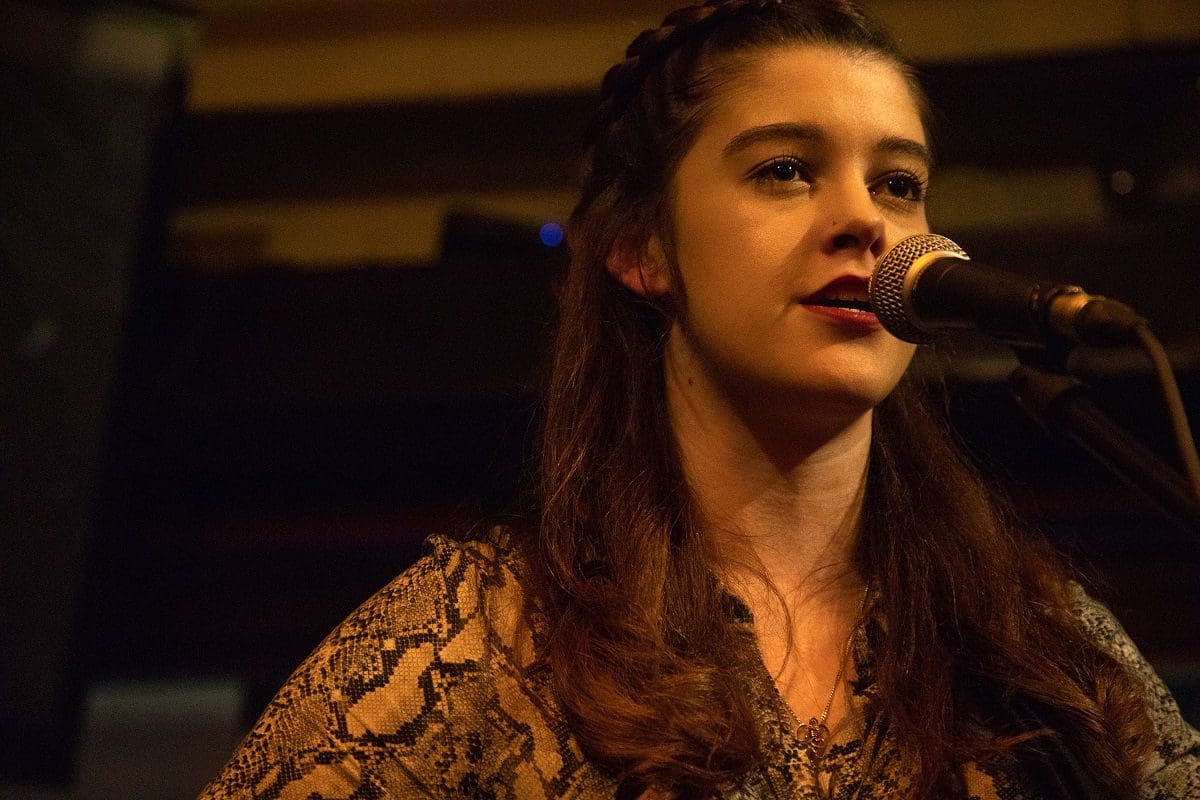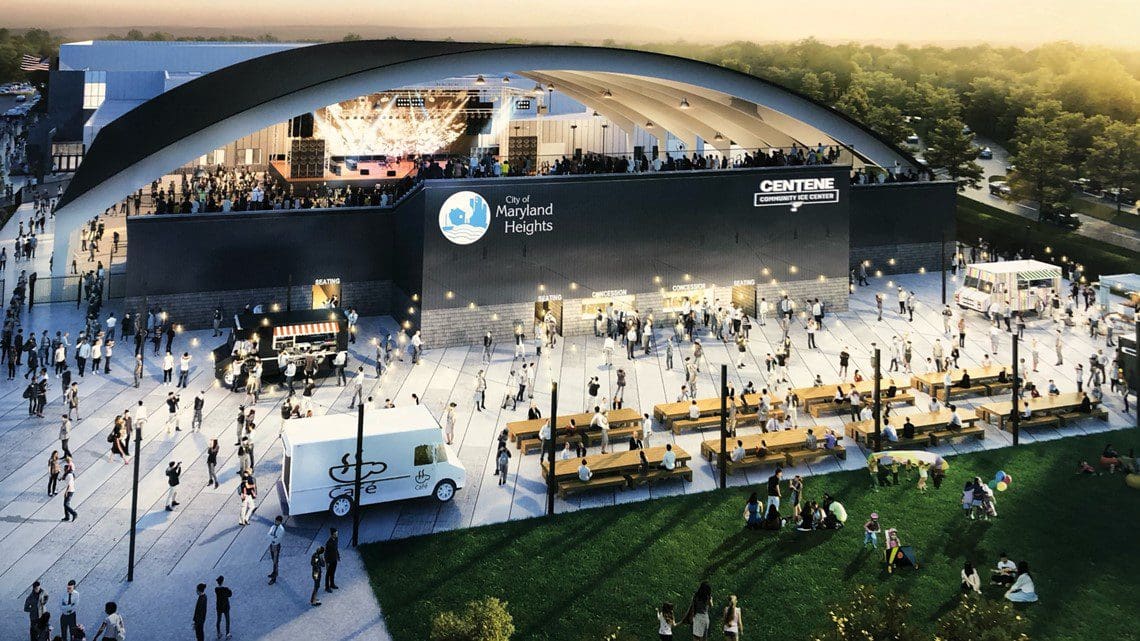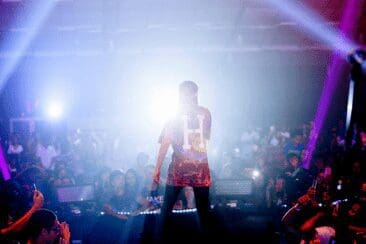In this post, I’m going to discuss and detail some great strategies for stage lighting basics and stage lighting equipment setup that even a novice can use. I’m also going to help you follow our insights so that you can learn how to automate your stage lighting.
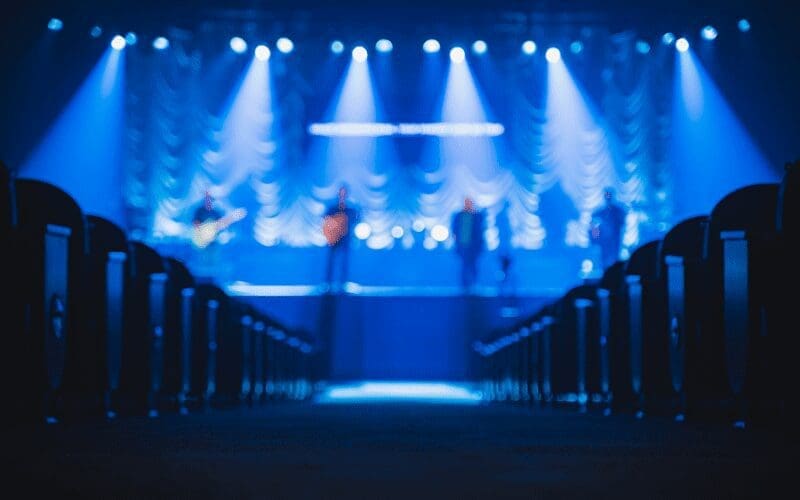
Under the umbrella of stage lighting basics, we will focus on stage lighting scope, stage lighting tools, lighting strategies, lighting location and lighting effects. It amazes me how the lighting effects can take an average performance to new heights. On a relatively small budget (hire) or investment long term.
With just a few hundred bucks, you will be able to create a unique experience that your fans will remember.
Key Elements of Stage Lighting Basics
Software is also fantastic for your front of house. Lights can be joined together, and a single device will switch and change colours light in a pre-programmed sequence.
The creative side of lighting instruments is the development of lighting. Which typically falls down to the task of a lighting designer.
The lighting designer puts together the creative use of lighting and the technological equipment available to create a final look on stage. Here are some of our best ways to understand the nature of stage lighting.
For specific lighting exposure you’ll need four coverage areas:
- Downstage –
Right, Center, Left - Upstage Center (Drums)
LED lamps are usually seen in newer display systems. But, many of the newer locations and theatres still use conventional lighting fixtures.
Understanding Lighting Techniques (Stage Lighting Basics)

After you’ve configured the scenes, it’s time for the series!
Anticipation is the secret of stage lighting basics. You’ve got to be able to predict what the music is going to do. Until they happen, you should be able to feel the shifts in the sound. Become one of the singers, Neo.
The colours are supposed to change in time with the music. The biggest changes should be made to the downbeats, and when the song turns parts (verse, chorus, bridge, etc).
As the song becomes more exciting, the lights should also become more exciting. It implies more transition, more motion and more special moments. Jumping from colour to colour is more disruptive than fading away so use this to your benefit.
The light show is supposed to be more exciting as the night goes on. So, the lights for the last band should be more exciting than the lights for the opening band. Most importantly, mix it with your emotions.
Listen to the song’s lyrics. Try to enhance what the singer has to say. Try to capture the mood and vibe of the light show in conjunction with the song.
Stage Lighting Basics – Lighting Positions
In addition to the types of lighting, you will also need to understand how the position of your lighting effects can affect your overall experience.
Front Lighting

This is the style of lighting that will provide the main source of illumination for your event series. The use of front lighting comes under McCandless’s Theory of Lighting. A theory that is intended to bring a sense of sunlight to the scene.
This is effective in both theatrical and artistic shows, and it is a lighting method which significantly reduces the presence of shadows.
In my view, if you want to accentuate yourself as a performer / DJ, this is the necessary method of stage lighting.
Stage Lighting Basics – Side Lighting

Side lighting helps the performer, particularly if the performer is walking. So this is a helpful method of lighting to consider if you’re going to have performers, or if you want to walk around the stage while you act.
I consider this kind of lighting is perfect for you to really accentuate your shoulders, mid-chest, and feet. You can even have some sidelights that can show even lower parts of your body.
High Side Lighting

Usually, this style of lighting is mounted anywhere between the 30 and 60-degree angles to show the upper part of the body.
As a consequence, the elbows, legs, middle chest and the top of the head are really accentuated. Which can help hide any awkward facial expressions.
For modern musical shows, this is a good lighting design to show stage actors, singers, and any stage items you choose to use.
There are two forms of high-sided lighting. High-sided left and high-sided right. Which both combine to create a full effect on actors.
Down Lighting

The addition of the halo effect from backlighting and downlight can really allow the viewer to see the results more plainly.
Downlighting is located at your bottom and shines upwards towards you and your fellow performer’s eyes. As standard, the beam of light would require a bit of overlap. This is so that you have enough exposure and can be properly illuminated during your musical performance.
For the downlight, the middle of the beam should be reached about shoulder height for maximum lighting.
Stage Lighting Basics – Popular Effects
Here are a few forms of lighting effects that you can expect to encounter:
Gobos

Each group has a symbol. If you use a gobo light, you can show that logo onstage.
In contrast, messages and photographs can also be projected utilizing gobo illumination. Which is ideal for activity success.
Beam Projectors
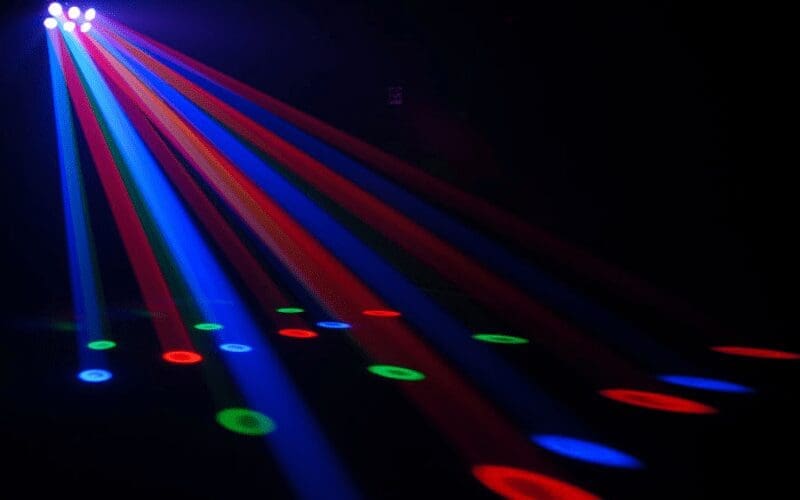
Such lamps have multicoloured mirrors that typically rotate on the stage and in the crowd. They have an arc that projects 45 degrees of beam angle in different colours.
The globe is motorized. So you can hope to see a constantly rotating array of colours.
Moonflower Effects
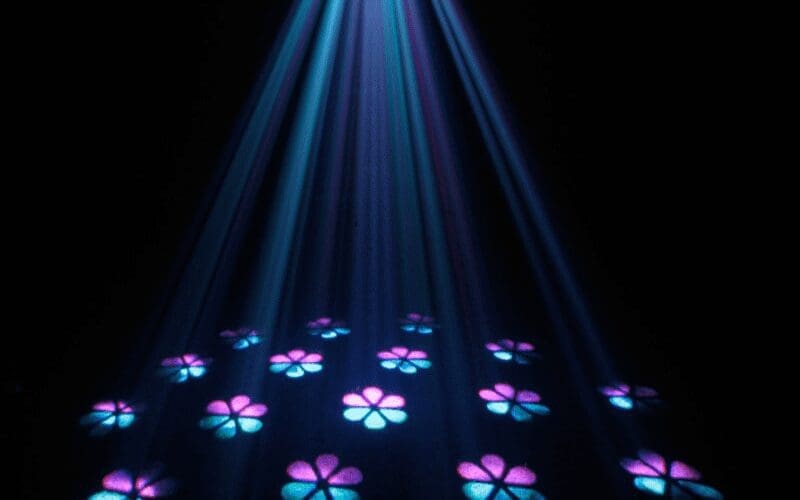
Also referred to as ‘flower effects,’ Moonflowers utilize several lenses to create a variety of geometric designs.
Normally, they’re not DMX-controllable.
Scanners

These are often DMX-controllable and can be folded or rotated using an inner motor.
Some of them use pre-sets and provide colour lighting for your series.
Disco Balls

When you look for more than a 70s era effect, then everyone is acquainted with the disco ball-style lighting of the venue.
Nowadays, most brands utilize LED technologies to provide a more diverse lighting experience.
Strobe Effect
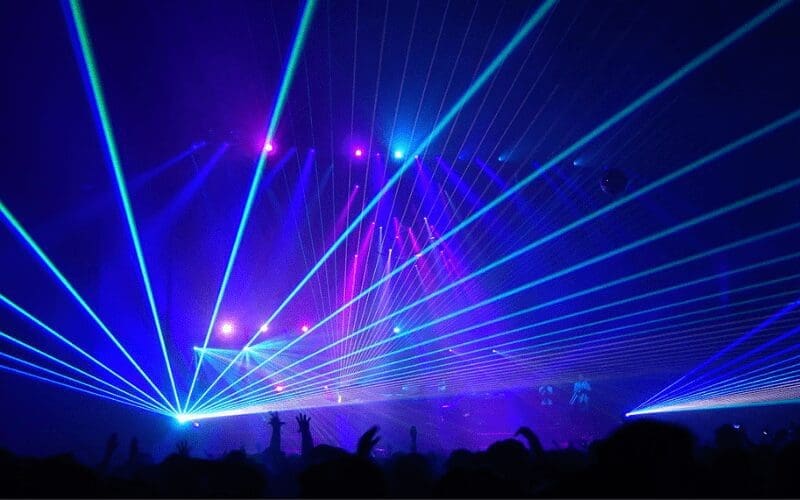
Strobe lights using flickering patterns reminiscent of flashing lights from silent movies.
They can be multicoloured and are suitable for live performances or DJ sessions in dance clubs.
Stage Lighting Basics – Recommended Set Up For A Beginner
In this section, we will go over the equipment we recommend for your stage lighting setup.
Let’s dive in!
1. LaluceNatz Par Lights With RGB 18LEDs

This unit is an RGB LED that comes with a maximum of 18 one-watt bulbs. Not only can you have red, green, and blue in your lighting effect, you can combine these colours and create new ones that will dazzle your room.
The light itself comes connected to a small stand that can be used to position the lighting system on the stage. Or to hang it from the ceiling above the model. The surface of the light is constructed of a very durable plastic substance that guarantees that it is not compromised during transport or when you set it up.
This instrument can be bought on Amazon for £94.99.
This system comes with a remote control system that makes it easy to control the beam. Fortunately, there are two remotes included in each bag. Which ensures that you will always have a spare part to use.
With this app, you can turn the lights on and off. As well as adjust the setting you have the light set in. There are a total of eight different modes that you can choose from. Allowing you to change the colour of the lights with the sound to the different effects that you might want to have when you use the lights during your performance.
You can also change the settings on the back of the light. This can be convenient if you’re standing next to the master light, and you need it to switch modes.
This is particularly useful when you have a few of these lights attached to improve the visibility of the area.
2. Chauvet DJ Colorband Pix M USB Moving D-Fi LED Strip Light
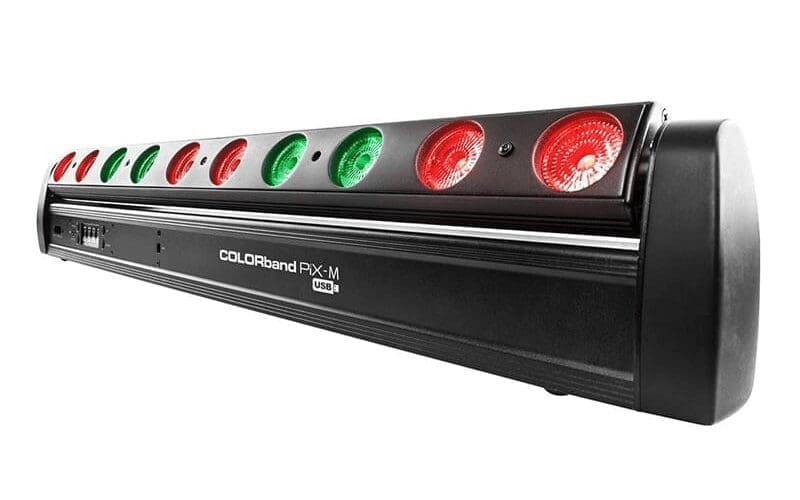
Like other Chauvet DJ lighting systems, this lighting system is one of the best if you want a large display that moves. You can get it for around $400.
I love the effects that this lighting strip can produce. In all, there are ten lights on the strip that can produce a rich backlight effect, wash lighting, or something a little more powerful for your results.
If you arrange the lights correctly, you can even produce a sweeping effect that looks amazing. Particularly if you use more than one tool for your output.
One of the great features of this lighting system is that it does not require a traditional lighting controller to adjust the modes and colours of the lights.
In fact, this unit has D-FI USB compatibility. This means that you will be able to use your smartphone to control the lighting as you do.
You can program the lights to be on at all times. Or you can set them to be activated by the sound. This also means that when you start the playlist, the stage will be lit.
Each light on the device can be individually controlled. So you’ll have a lot of options when it comes to lighting effects.
3. Chauvet DJ Intimidator Spot 155 Compact LED

Another product from Chauvet DJ, this next lighting choice is one that will provide a spotlight on your floor. I love the moving head effect. In my experience, it’s one of the best moving headlights you can buy in this price range.
While the head of the lighting screen is quite big, one of the aspects I like about this device is that it has a small footprint and a scratch-resistant coating that will improve its longevity. The price of this product on Amazon is £393.52.
I like how simple it is to configure the lighting effects that this device has. It has a four-button interface that lets you change colour, concentrate, and strobe flashes. Both controls are situated at the front of the platform. While the back has items like a DMX input/output and an interface for adding further phones.
You can even use gobos in the light if you want to create an impact on the wall or the board. There is also a dimming feature on this device. So you can increase the light when using some effects while leaving others clear.
4. ADJ Products Mega Par Profile Plus LED Lighting – Stage Lighting Basics Essential
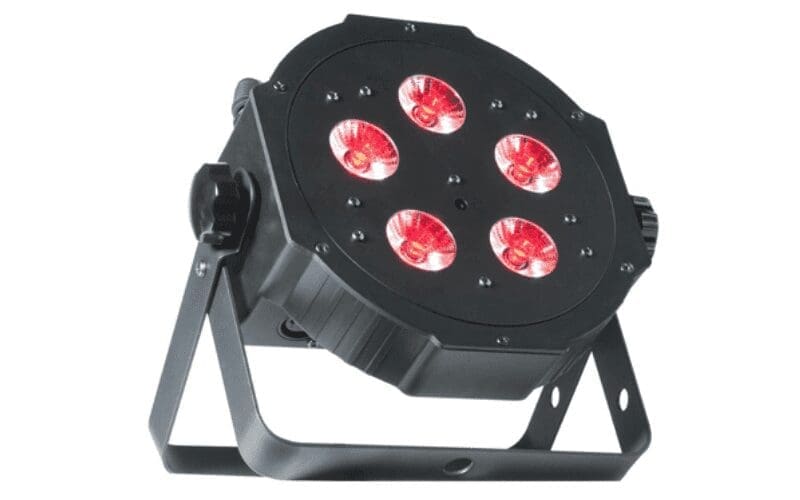
The next lighting system is an ADJ Products model designed to give you a fantastic lighting choice without breaking the bank. This beam, which has 107 LEDs, is actually of great quality.
It also has UV colour mixing. So, the lighting choices that become open to you can significantly improve your efficiency. The only drawback with this brand is that the UV light does not penetrate that far. In reality, it only reaches around 16 inches.
For this purpose, I tend to use this lighting alternative for walls, backlights and stage upgrades. Particularly when using UV lighting effects.
If you’re working in or lighting up a large region, you might want to link a few of them to a larger area of influence.
There are five channels that you can choose from. Including dimming mode, auto mode, fixed colour mode, powered angle mode, and disabled sound mode.
All of these can be operated at the rear of the device or with the default DMX lighting regulator of your choice. The price range on Amazon is between $26 – $75.
5. GBGS LED Up Lighting RGBW LED Par Lights T

The GBGS lighting is a par can illumination device with a minimum of seven LED lights. I like the way this light appears along the ground. But, if you use several of these lamps, they fit well in the rain.
It also has a relatively low price level. This makes it an ideal option for newcomers to find their first lighting rig, the price range on Amazon is between $27 – $39.
Personally, I like the size of this light because it’s only seven square inches deep and 4.4 inches deep. So it can be easily stored and make it easy to fly to your show.
You can note on the back of the lamp that there is a screen and four buttons that you can use to adjust the style of the lighting system. As well as the colour of the lights that are shown.
There’s a DMX in and out where you can use a standard lighting system. As well as an interface that helps you to attach certain gadgets to your main beam.
Each system often comes with a stand that makes it easy to sit on the stage as well as hang overhead.
6. Blizzard Lighting LB PAR HEX LED

If you’re searching for a reliable lighting solution that’s going to be great for both front and side lighting on the wall. I like the appearance of this light because the light is not too big. It comes with a base that can be used as a stand on the floor or a platform that is fixed over where you’re going to perform.
It’s also made from robust, scratch-resistant material which won’t get scratched when you need to load and unpack the lighting between the gigs. This instrument can be purchased on Amazon as the price varies from $27 to $70.
Within each of the 12 lights is a 15-watt lamp. Which I think is a marvel to brighten up the lighting show that you are making. It’s an RGBAW LED that’s also designed with UV lighting that gives your entire stage an eerie purple glow.
There are a number of other options when it comes to painting. However, in reality, there are 12 built-in programs that you can use during your game, or you can set it to active sound mode so that the lighting effects begin when you start playing music.
There is also a strobe light effect on this design, which could be perfect for a DJ to use in a group. On the back, you’ll see a screen, a control panel, a mic, a DMX in and out, and power in and out.
Common Lighting Devices For Stage Lighting Basics
Are you curious what kind of lighting fixtures you’re going to use for your show?
As a novice, it can be very frustrating to find the right accessories for your results. So here’s a bit of a cheat sheet that you can use to build an illumination profile for your music
Ellipsoidal, typically referred to as an ERS, the ellipsoid reflector spotlight is built to provide a strong and well-defined beam for the illumination of the subject.
This device uses a projector and reflector combination to enhance and direct the output light through the barrel and lens. This is so that the light is highly focused.
Followspots – Stage Lighting Basics Essential

If you are trying to show your success when you drive, follow-up light becomes important. These lights can be transferred through an operator so that the topic is monitored through an operation.
Normally, it involves an operator. But luckily, this can be accomplished through code in the lighting booth.
Fresnels

Fresnel lights were initially designed for lighthouses. But, their innovative lighting system has become a key component in stage lighting.
Pronounced as Fray-nel, the Fresnel light has concentric rings on the lens itself, so that the light is bent towards the subject. If you think of those big film spotlights at the premieres, you think of Fresnel lights.
These lights produce a lot of energy. But they’re great for offering high-definition shadows if that’s what you’d like in your series.
Par Cans

‘Par cans’ is short for parabolic aluminized reflectors, which create both narrow profile spots and a large floodlight.
These are referred to as cans because the barrel of light is distinctly can-shaped. But in any case, because of their durability, such lights are great for lighting.
In reality, they are widely used for both clubs and concerts but are often used in commercial lighting as well.
Floodlights

Normally, when you see a floodlight, the form of a “bulb in a container” is very obvious.
Normally, with conventional lighting, the lamp will have a forward reflector to transmit the beam. But all floodlights provide a “stream” of light that is somewhat blurred.
Such lights are not really controllable, but they provide outstanding illumination for your displays. Nowadays, you will find LED-based floodlights that use less fuel.
Strip Lights

Such lights can be helpful for modern musical shows since they typically provide a multi-coloured, effect-driven type of lighting that is suitable for many genres of music.
Strip lights may also vary in size. Many DJs use these light styles to reflect on aspects of their output or equipment.
Moving Lights

Some of these lights may score higher on the SATs than the technicians who use them.
These are super-sophisticated devices that are powered with a joystick-like you’re a fighter pilot or something like that.
These also provide colour change, focus adjustments and motorized shutters.
Hazers

these aren’t lights, but they’re just as necessary.
In reality, without fog, you can’t see light beams — only where they hit the floor.
You need a hazer for a proper light display.
DMX Controller

DMX stands for Digital Multiplex Signal.
It is a digital communication network used to monitor the lighting and effects of the stage.
Most of the facilities have a variety of lighting devices, all of which are operated by a single console.
The panel, identified as the DMX interface, attaches the DMX cable to the first fixture in the row. Through device is then “daisy-chained” to the next one, and so on throughout the string.
The DMX controller helps you to monitor the frequency, colour and orientation of any fixture in the string. You can use it to mix shades, fade lights in and out, or even time the strobe to a song rhythm, depending on the unit.
Stage Lighting Basics: Our Final Thoughts

The different types of lighting you can get will enhance the experience you provide to your audience and make the success more unforgettable.
Each of the items I have outlined in the guide will certainly add a little flourish to your results as well as provide some much-needed lighting.
Once you’ve finished a show with amazing lighting effects, you’ll never want to go back to a simple stage set-up without lights again.
We hope that you enjoyed our article about stage lighting basics! Be sure to share it across your socials and give us a tag @musicgateway!






